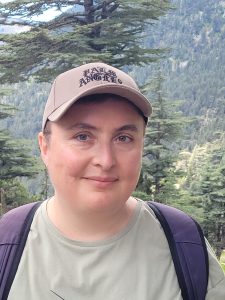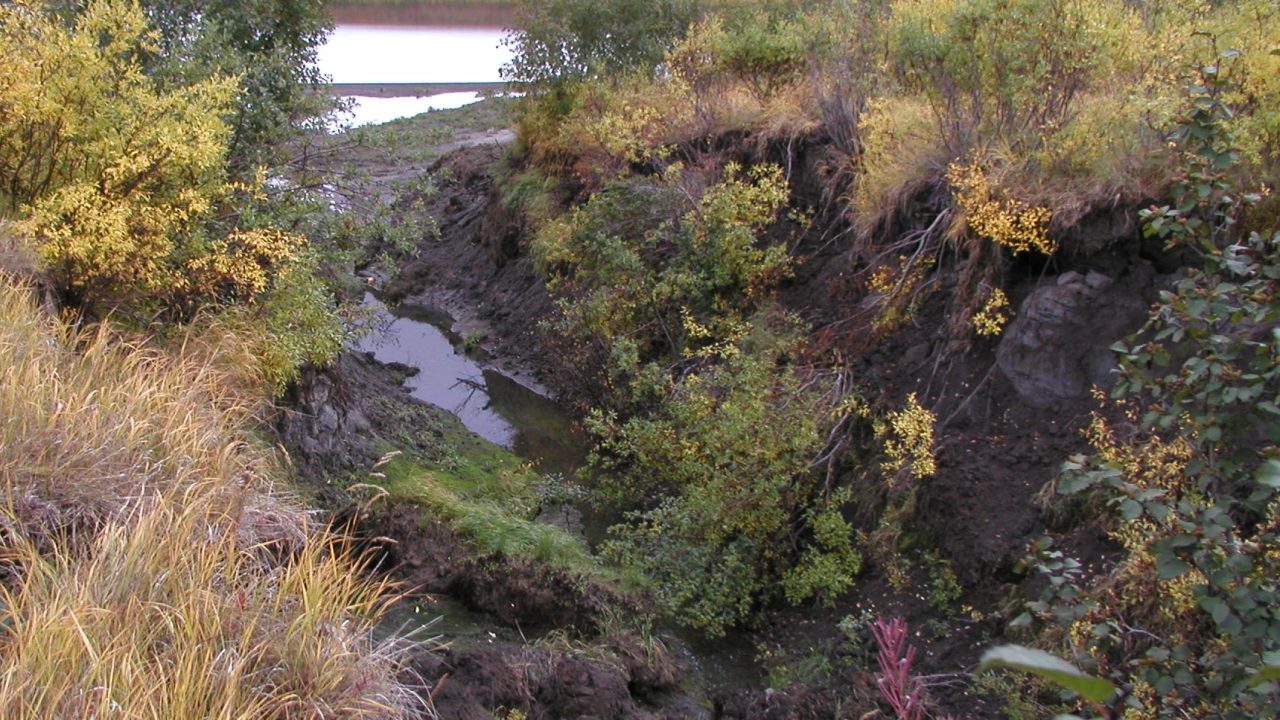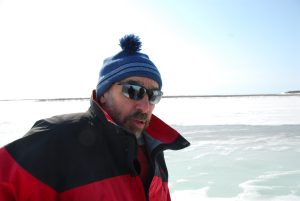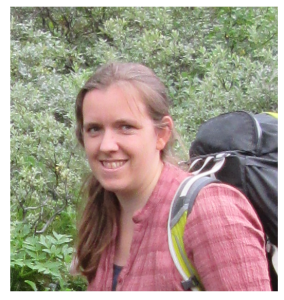BARIN – socio-ecological resilience
Project overview
Beavers and Socio-ecological Resilience in Inuit Nunangat
Expansion de l’aire de répartition du castor dans l’Arctique : comprendre les effets interreliés sur le climat, l’environnement et la société et leurs implications pour le bien-être des Inuits
Kivgaluit nayugait hiamitpalliayut Ukiuqtaqtumut: ilihimattiarahuaqhugu atatayut hilamik, avatinik inuuhiqattiarniqmullu mihingnautinik ihuaqhautighallu Inuinnait inuuhiqattiariamik
ᐸᒥᐅᒃᑭᕐᓄᑦ ᐊᖏᓪᓕᒋᐊᕐᓗᒍ ᐅᑭᐅᖅᑕᖅᑐᖅ: ᑐᑭᓯᒃᑲᓐᓂᒥᕋᓱᐊᕐᓗᒋᑦ ᐊᑦᑐᐊᓂᖏᑦ ᓯᓚ ᖃᓄᐃᑦᑐᓂᖓᓐᓂ, ᐊᕙᑎᓄᑦ ᑭᒃᑯᑐᐃᓐᓇᐃᓪᓗ ᐊᑦᑐᐃᓂᖃᕐᓂᖏᑦ ᐊᑐᖅᑕᐅᒋᐊᖃᕐᓂᖏᓐᓂᓪᓗ ᐃᓅᓇᓱᐊᑦᑎᐊᕐᓂᕐᒧᑦ.
As beavers move northwards, and their populations expand in the Arctic, BARIN addresses how changing beaver populations are impacting hydrology, ecosystems, fish and people and their livelihoods. University and government scientists are working in partnership with Inuvialuit organisations and people to coproduce research and develop tools to support ongoing research and monitoring.
Project location
We are working in the Inuvialuit Settlement Region, with particular focus on the Inuvik-Tuk highway and Aklavik, Tuktoyaktuk and Inuvik. This includes studies at the Trail Valley and Hans Creek research watersheds located along the Inuvik-Tuk Highway.
Project images
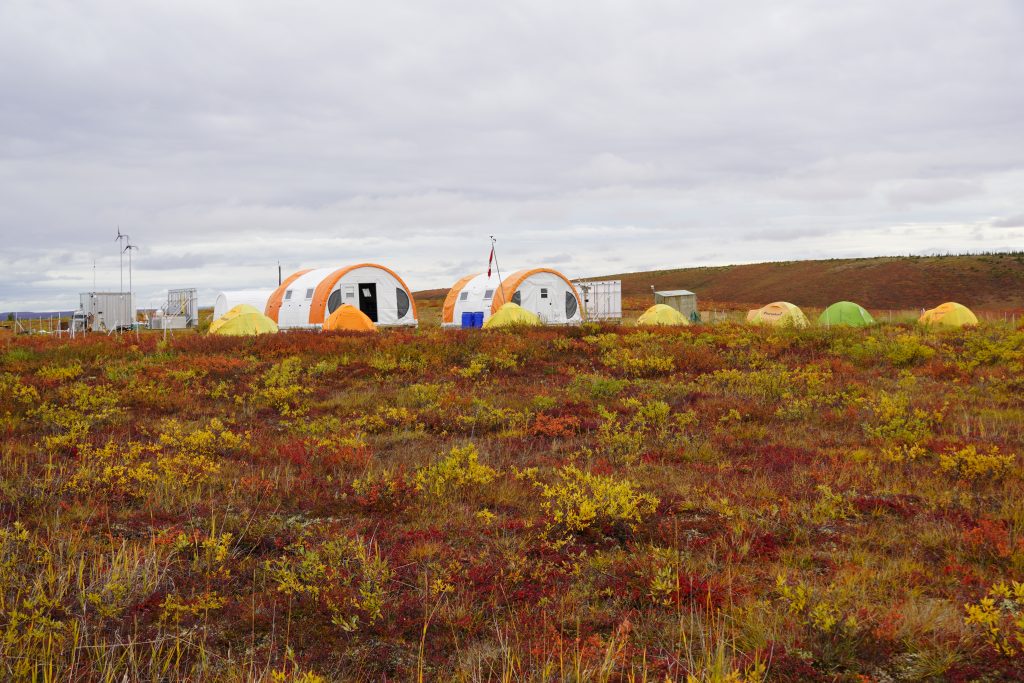
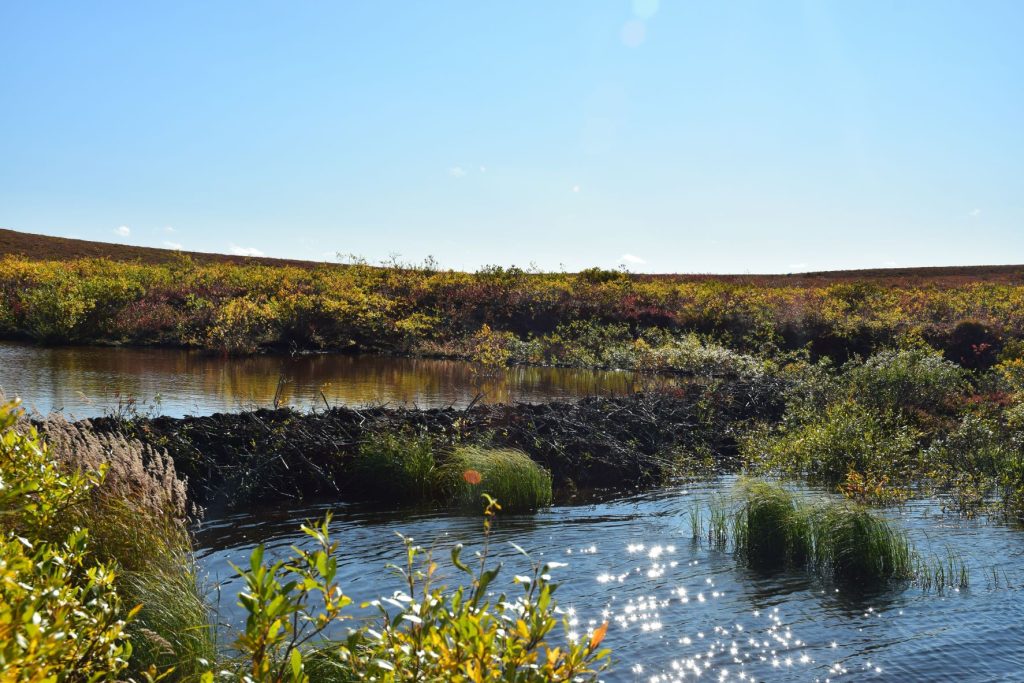
Summary
As beaver population are increasing well north of the treeline, they are dramatically altering ecosystems. A key question for the Inuvialuit Settlement Region and beyond is the extent, scope and interlinkages between ecological and sociological changes that are occurring as beaver populations increase. Impacts of beavers can cascade down ecological systems, causing major transformations, known as regime shifts. This project will examine and synthesise the interlinkages between beaver occupancy, stream and lake characteristics, impacts on fish populations, and impacts on local communities in collaboration with the Inuvialuit Fish Joint Management Committee. We will examine key features of these ecological regime shifts such as spatial patterns of change, timing of change and drivers of transitions to different alternative stable states in relation to beaver population dynamics. We will then examine the impacts on local communities and their wellbeing. The project will work with Inuvialuit partners and community members to co-create tools and infrastructure usable beyond the life of the project for ongoing Inuit-led research in the Inuvialuit settlement region and beyond to support Inuvialuit self-determination. We thereby aim to support the longer-term monitoring and research required to inform ongoing stewardship under the transformative changes created by beavers.
L’augmentation de la population de castors bien au nord de la limite de la zone arborée entraîne une modification radicale des écosystèmes. Une question clé pour la région désignée des Inuvialuit et au-delà concerne l’étendue, la portée et les liens entre les changements écologiques et sociologiques qui se produisent à mesure que les populations de castors s’accroissent. Les impacts des castors peuvent se répercuter en cascade sur les systèmes écologiques et provoquer des transformations majeures, appelées changements de régime. Dans le cadre de ce projet, nous examinerons et synthétiserons les liens entre la présence des castors, les caractéristiques des cours d’eau et des lacs, les répercussions sur les populations de poissons et les impacts sur les communautés locales, en collaboration avec le Comité mixte de gestion du poisson des Inuvialuit. Nous examinerons les caractéristiques clés de ces changements de régime écologique, comme les schémas spatiaux de changement, le moment du changement et les facteurs de transition vers d’autres états stables, en relation avec la dynamique des populations de castors. Nous examinerons ensuite les impacts sur les communautés locales et leur bien-être. Le projet sera réalisé en collaboration avec des partenaires et des membres de la communauté des Inuvialuit, afin de cocréer des outils et une infrastructure qui pourront être utilisés au-delà de la durée du projet pour permettre la poursuite de la recherche par les Inuits dans la région désignée des Inuvialuit et au-delà, afin de soutenir l’autodétermination des Inuvialuit. Nous visons ainsi à soutenir la surveillance et la recherche à plus long terme nécessaires pour éclairer l’intendance continue dans le cadre des changements transformateurs induits par les castors.
Kivgaluit amigaiqpalliaplutik tununngani avatquttugu napaaqtulik, mihingnaqtumik aallannguqtiriyut nauyunik. Apiqhuutilluaq taapkununnga Inuvialuit Nunataarviat Aviktuqhimaniit avatquttugulu kikliliuqhimayut, havaaghait atatayullu manighiurniqmut inuuhiqattiarniqmullu aallannguqpalliayut tajja kivgaluit amigaiqpalliaplutik. Mihingnautit kivgalungnit piqpaluiyautauvallialaaqtut nauyunik, aallannguqtiriplutik, ilihimayauyut taimaa hangutaqtutut. Hapkua havaaghanit ihivriuqhiniaqtut titiraqlugillu atatarutait taapkua kivgaluqarniit, harvaqtut tahiillu pitquhiit, mihingnautait iqalungnut, mihingnautaillu nunallaarmiunut havaqatigiplugit taapkua Inuvialuit Iqalliqiyinik Munaqtiqatigiit Katimayiralaangit. Ihivriuqniaqtaqqut ilittuqhitilluat hapkunani nauyut hangutaqviinit taapkuatut pitquhiit aallannguqpalliaplutik, humuktumi aallannguqpalliayuq aulautauvaktullu nuutpallianiqmut aallanut amirnaittunut pitquhirnut ihumagiplugit kivgaluit. Ihivriuqniaqtaqqut mihingnautait nunallaarmiunut inuuhiinullu. Havaaghanit havaqatiginahuaqtait Inuvialuit havaqatigiit nunallaarmiullu hanaqatauyaamik hanalrutighanik ikluqpaghaniklu atuqtauyughat kinguani havaaghat atuqtauhimmaaqluni Inuit-hivuliqtuqtainit qauyihautinut talvani Inuvialuit Nunataarvianit avatquttugulu ikayuriamik Inuvialuit inmikkut-ihumaliurniq. Talvuuna ikayuqnahuaqhimayaqqut hivituyumi munaqhiyut qauyihaiyullu iharianaqtut naunaiqhitiyaamik ikayuqtighat ataagut nutaannguqpalliayut aallannguqtiqhimayainit kivgaluit.
ᐸᒥᐅᒃᑮᑦ ᐊᒥᓱᕈᖅᐸᓪᓕᐊᓕᕐᒥᔪᑦ ᓇᐹᑦᑐᐃᑦ ᑭᓪᓕᖏᓐᓂ, ᐊᓯᔾᔩᕙᓪᓕᐊᓪᓚᕆᑦᑐᑦ ᐆᒪᔪᖃᖅᑐᑦ ᓇᔪᒐᒥᓂᒃ ᐊᑦᑐᐊᖃᑎᒌᑦᑐᓂᒃ. ᐃᓱᒪᒋᔭᕆᐊᖃᖅᑕᕗᑦ ᐃᓅᕕᐊᓗᒋᑦ ᓄᓇᑖᕈᑎᖓᓐᓂ ᐊᒻᒪᓗ ᐅᖓᑖᓅᕆᐊᖃᕐᓂᖏᑦ, ᑕᑯᓐᓇᖅᑕᐅᔪᑦ ᐊᑦᑐᐊᓂᖏᓪᓗ ᐆᒪᔪᑦ ᓇᔪᒐᖏᑕ ᓯᓚᑎᖏᑕᓗ ᖃᓄᐃᑦᑑᓂᖏᑦ ᐊᒻᒪᓗ ᐃᓄᓕᕆᓂᕐᒥᑦ ᐊᓯᔾᔩᓂᖏᓐᓂ ᑕᒪᒃᑯᐊ ᐸᒥᐅᒃᑮᑦ ᐊᒥᓱᕈᖅᐸᓪᓕᐊᑐᐃᓐᓇᕐᓂᖏᑦ. ᐊᑦᑐᐃᓂᖃᕐᓂᖏᑦ ᐸᒥᐅᒃᑮᑦ ᑎᓱᕙᓪᓕᐊᒍᓐᓇᕐᖓᑕ ᐆᒪᔪᖃᖅᑐᑦ ᓇᔪᒐᒥᓂᒃ ᐊᑦᑐᐊᖃᑎᒌᓐᓂᖏᑦ ᐊᓯᔾᔩᔪᓐᓇᑦᑎᐊᕐᖓᑕ, ᖃᐅᔨᒪᔭᐅᓗᑎᒃ ᐊᓯᔾᔩᓂᖏᑦ ᐃᓕᖅᑯᓯᐅᕙᑦᑐᓂᒃ. ᑕᒪᓐᓇ ᐱᓕᕆᐊᖑᔪᖅ ᐊᒻᒪᓗ ᓴᓇᔭᐅᓯᒪᓂᖏᑦ ᐊᑦᑐᐊᓂᖃᖅᑐᑦ ᐸᒥᐅᒃᑭᕐᓄᑦ ᐃᓂᒋᔭᖏᓐᓄᑦ, ᑰᒐᓛᑦ ᑕᓰᓪᓗ, ᐊᑦᑐᐃᓂᖃᖅᑐᖅ ᐃᖃᓗᓐᓂᑦ, ᐊᑦᑐᐃᓂᖃᖅᑐᖅ ᓄᓇᓕᓐᓂᑦ ᐱᓕᕆᖃᑕᐅᕙᑦᑐᓂᒃ ᐃᓅᕕᐊᓗᐃᑦ ᐃᖃᓗᓕᕆᓂᕐᒧᑦ ᐊᐅᓚᑦᑎᖃᑎᒌᑦᑐᓂᒃ ᑲᑎᒪᔨᕋᓛᖏᓐᓂ. ᕿᒥᕐᕈᓂᐊᕋᑦᑎᒍ ᑭᓱᑯᑦᑎᖏᑦ ᐆᒪᓂᖃᖅᑐᑦ ᓇᔪᒐᒥᓂᒃ ᐊᑦᑐᐊᖃᑎᒌᓐᓂᖏᓐᓂ ᒪᓕᒐᕐᓂᑦ ᐊᓯᔾᔨᖃᑦᑕᕐᓂᖏᓐᓄᑦ ᓲᕐᓗ ᐃᓂᖏᓐᓂ ᐊᓯᔾᔨᖅᑐᑦ, ᖃᖓᒃᑰᓂᖏᓪᓗ ᐊᓯᔾᔨᕐᓂᖏᑦ ᐊᒻᒪᓗ ᑭᓱᒧᑦ ᐊᓯᔾᔨᕐᒪᖔᑕ ᐸᒥᐅᒃᑮᑦ ᐊᒥᓲᓂᖏᑦ ᐊᓯᔾᔨᕐᓂᖏᓐᓄᑦ. ᕿᒥᕐᕈᓂᐊᕐᒥᔪᒍᑦ ᐊᑦᑐᐃᓂᖃᕐᓂᖏᓐᓂ ᓄᓇᓕᓐᓂ ᐃᓅᓇᓱᐊᑦᑎᐊᕐᓂᖏᓐᓂᓪᓗ. ᑕᒪᓐᓇ ᐱᓕᕆᐊᖑᔪᖅ ᐃᓅᕕᐊᓗᐃᑦ ᐱᓕᕆᖃᑎᖏᓐᓂ ᐱᓕᕆᖃᑎᖃᕐᓗᑎᑦ ᓄᓇᓕᓐᓂᓪᓗ ᓴᖅᑮᖃᑕᐅᓯᒪᔪᓂᒃ ᓴᓇᕐᕈᑎᔅᓴᖏᓐᓂ ᐊᒻᒪᓗ ᐊᐅᓚᑦᑎᔾᔪᑎᔅᓴᖏᓐᓄᑦ ᐊᑐᕐᓗᑎᑦ ᐃᓅᓯᕆᔭᐅᔪᓂᒃ ᐱᓕᕆᐊᓂᒃ ᐃᓄᓐᓄᑦ ᓯᕗᒃᑲᑕᖅᑕᐅᓗᑎᒃ ᖃᐅᔨᓴᕐᓂᐅᔪᑦ ᐃᓅᕕᐊᓗᐃᑦ ᓄᓇᑖᕈᑎᖏᓐᓂ ᐊᒻᒪᓗ ᐃᑲᔪᖅᑐᐃᖃᑎᒌᑦᑐᓂᒃ ᐃᓅᕕᐊᓗᐃᑦ ᓇᒻᒥᓂᖅ ᐱᔪᒪᔭᖏᓐᓂ. ᐃᑲᔪᖅᑐᕋᓱᐊᕈᒪᒐᑦᑎᒍ ᐊᑯᓂᒧᑦ ᐅᔾᔨᖅᓱᕐᓗᑕ ᖃᐅᔨᓴᕐᓗᑕᓪᓗ ᑐᓴᐅᒪᑎᑦᑎᓗᑕᓗ ᑲᒪᑦᑎᐊᕆᐊᖃᕐᓂᕐᒥᑦ ᒪᓕᓪᓗᒋᑦ ᐊᔾᔨᖅᑑᒐᓗᐊᑦ ᓴᖅᑭᖅᑕᐅᔪᑦ ᐸᒥᐅᒃᑭᕐᓄᑦ.
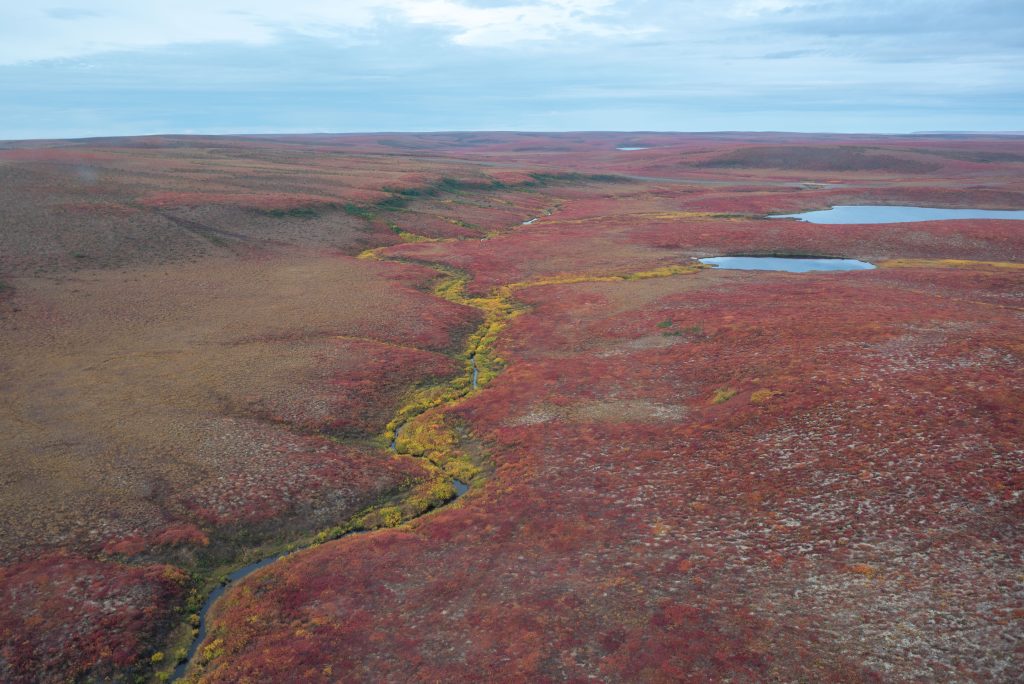
People
Principal investigators
Co-investigators and collaborators
-
Joseph Culp
Co-Investigator
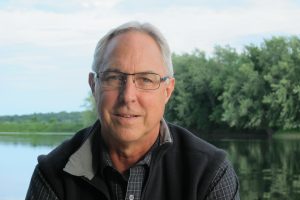
-
Nicola Walshe
Co-Investigator
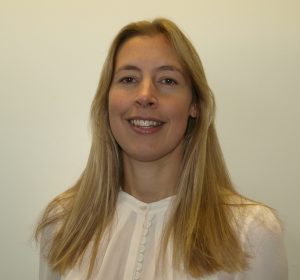
-
Melanie Rohse
Co-Investigator
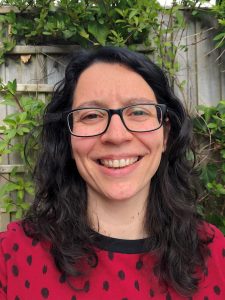
-
Gareth Rees
Co-Investigator
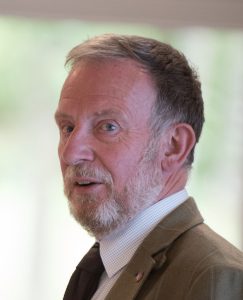
-
Herb Nakimayak
Co-Investigator
-
Oliver Sonnentag
Co-Investigator
-
Ben DeVries
Co-Investigator
-
Kiyo Campbell
Collaborator
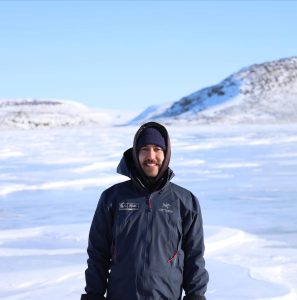
-
Georgia Melodie Hole
Post-Doctoral Fellow
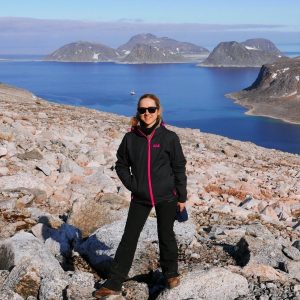
-
Callum Pearce
Post-Doctoral Fellow
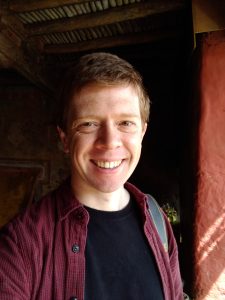
-
Jordan Musetta-Lambert
Co-Investigator
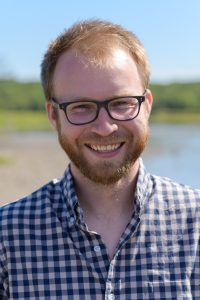
-
Kirt Ruben
Collaborator
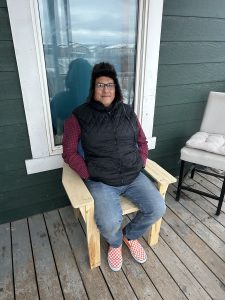
-
Kevin Arey
Collaborator
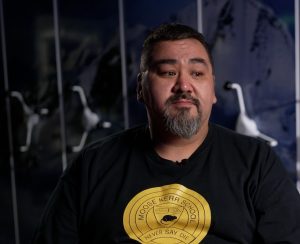
-
Max Kotokak Sr.
Collaborator
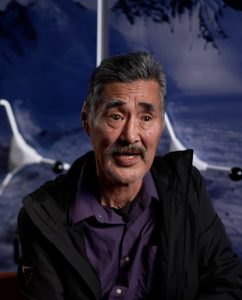
-
Olga Tutubalina
Collaborator
